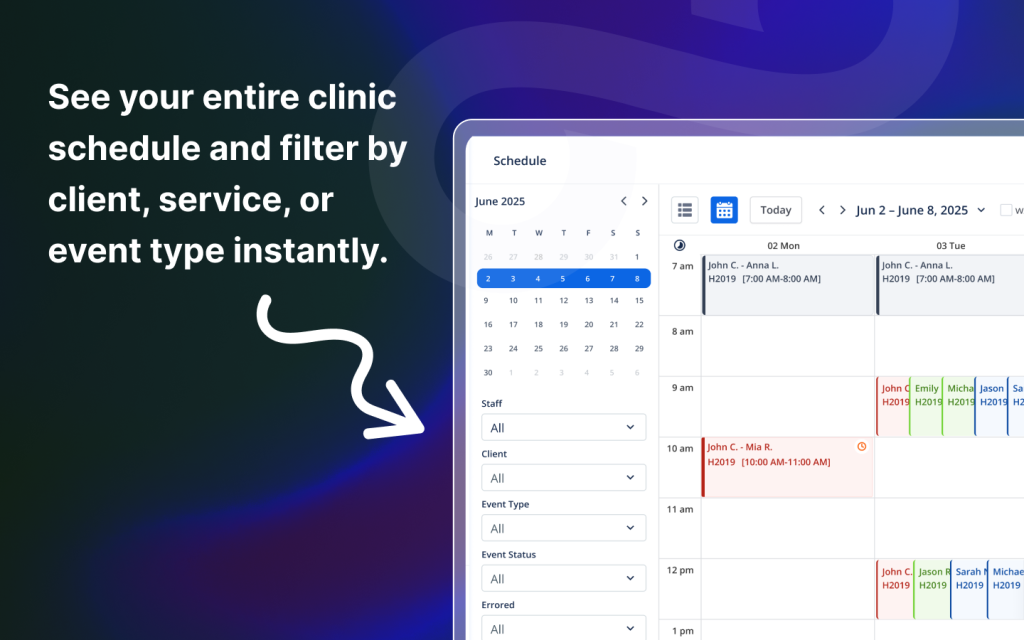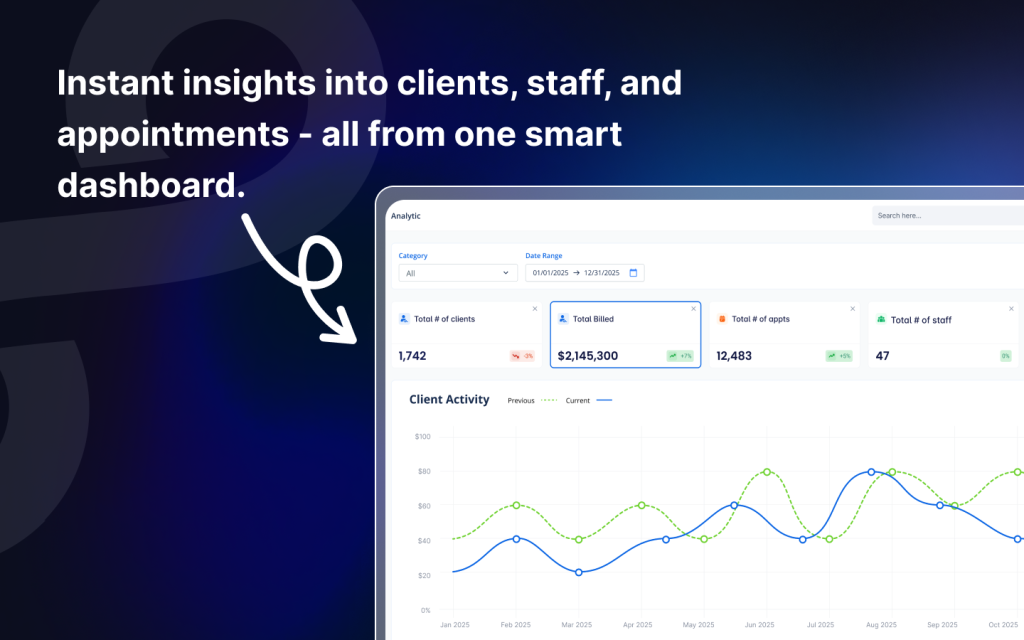Starting an ABA clinic is exciting – but without cost-effective ABA practice management in place, even small inefficiencies can cost time, money, and growth opportunities. Most startups struggle to balance affordability with functionality, often patching together free tools that aren’t built for ABA.
But cost-effective ABA practice management doesn’t mean settling. It means choosing tools that streamline operations, prevent compliance risks, and help you grow intentionally – without breaking the bank.
Why Cost-Effective ABA Management Feels Expensive
Many startups assume full-featured ABA software is out of reach. That’s because many providers use pricing structures that look affordable up front, but include hidden costs like:
- Onboarding and setup fees
- Long-term contracts
- Per-user or per-location fees
- Upcharges for essential tools like billing, claims, or support
These pricing traps can cripple new clinics, making it harder to reinvest in staff, training, or marketing.

What Makes ABA Software Truly “Cost-Effective” for ABA Management ?
Affordable doesn’t mean minimal – it means value-driven.
A cost-effective ABA practice management platform should offer:
- No contracts – Freedom to adapt as your practice grows
- No onboarding or data migration fees – Easy transitions without surprise bills
- No minimum licenses – Pay only for what you use
- All-in-one features – From scheduling and billing to credential management, included from the start
These qualities reduce long-term operating costs and create a faster return on investment – critical for a new clinic with limited runway.
Core Features Every Startup Clinic Still Needs
Even small clinics need robust tools to stay compliant and efficient. Don’t cut corners on these:
- Credential-based scheduling
Auto-blocks staff from being scheduled if licenses, CPR, or TB tests are expired. - Real-time authorization tracking
Prevents overscheduling or service over-delivery outside allowed CPT ranges. - Built-in billing and claims
Eliminates manual claim entry with direct clearinghouse submission and tracking. - Session documentation and digital notes
Secure notes, signatures, and time logs required before billing is allowed. - Role-based access
Protects data and ensures only trained staff handle critical workflows.
These aren’t “enterprise extras.” They’re essential to getting paid and staying out of compliance trouble.

Scaling Cost-Effective ABA Management Without Adding Overhead
Growth often brings new complexity – but it shouldn’t demand new software.
Look for systems that support:
- Easy expansion to more clients and staff
- Onboarding with guided workflows and access control
- Built-in alerts for credential expirations
- Automated billing for increased session volume
- Transparent pricing that scales without friction
If your software can’t grow with you, it’s not cost-effective – it’s a future liability.
Case Study: Doing More with Less
A new ABA clinic with five staff and 30 clients tried to run operations with spreadsheets, Google Calendar, and a third-party invoice tool.
The outcome?
- 20% of sessions missed documentation
- Staff scheduled while credentials were expired
- Multiple claims denied for authorization mismatches
After switching to an ABA-specific platform:
- Denials dropped by 50%
- Admin time was cut by over 12 hours/week
- The team focused on clinical quality — not administrative cleanup
Software built for ABA practice management saved the clinic money, time, and their first-year reputation.

How to Evaluate Value Over Price
Before buying into any ABA tool, ask:
- Does it enforce credential and billing compliance in real time?
- Are all core features (like claims and scheduling) included?
- Will it eliminate admin hours, or add more complexity?
- Are there any hidden costs tied to support, upgrades, or licenses?
Cost-effective software should feel like a partner – not another overhead line item.
Conclusion
Cost-effective ABA practice management isn’t about getting the cheapest tool. It’s about choosing a platform that reduces risk, automates your compliance, and grows with you – without tacking on fees.
Startups deserve software that simplifies – not complicates – clinic operations. And that’s what smart, ABA-specific platforms are built to do.
FAQs
1. Can affordable software still be reliable?
Yes – platforms like TherapyLake include core features like billing, credentialing, and documentation without upcharges.
2. What’s the risk of using free or generic tools?
Lack of ABA-specific rules often leads to billing errors, compliance risks, and manual cleanup that wastes time and costs revenue.
3. What features should be non-negotiable?
Credential-aware scheduling, automated billing, and real-time authorization tracking are must-haves for even the smallest clinics.
4. Is this scalable if we grow to 50+ clients?
Yes. Smart systems grow without bloated pricing or disruptive migrations.
5. Should startups prioritize infrastructure early?
Absolutely. Good infrastructure saves your team time, avoids denials, and protects your reputation from the beginning.
